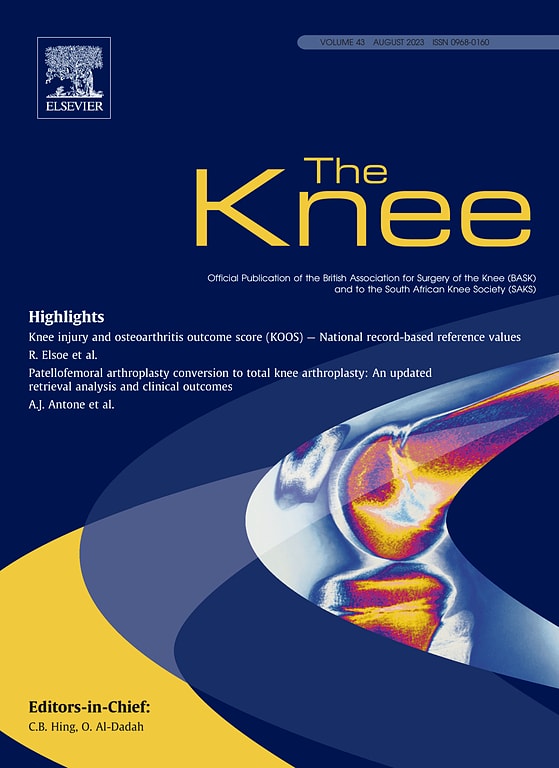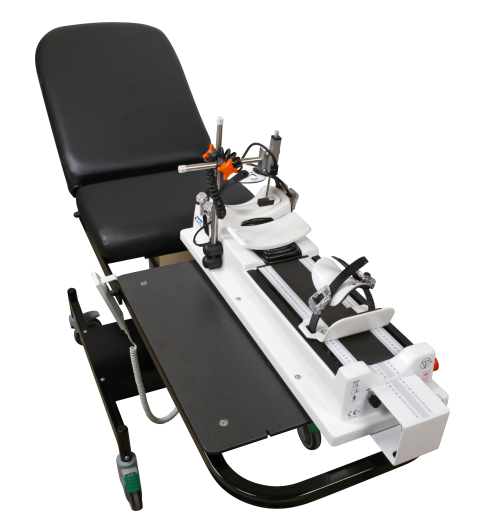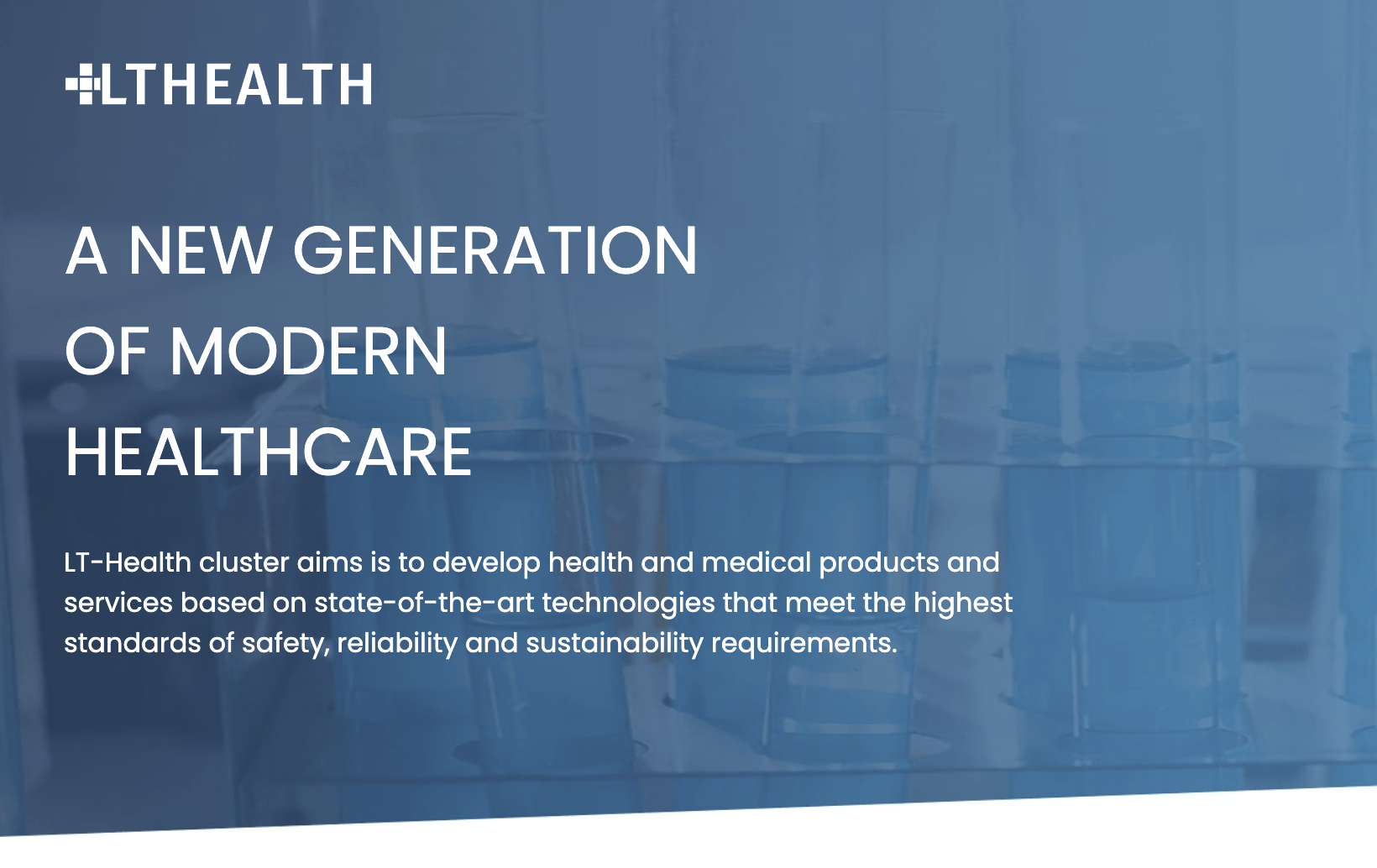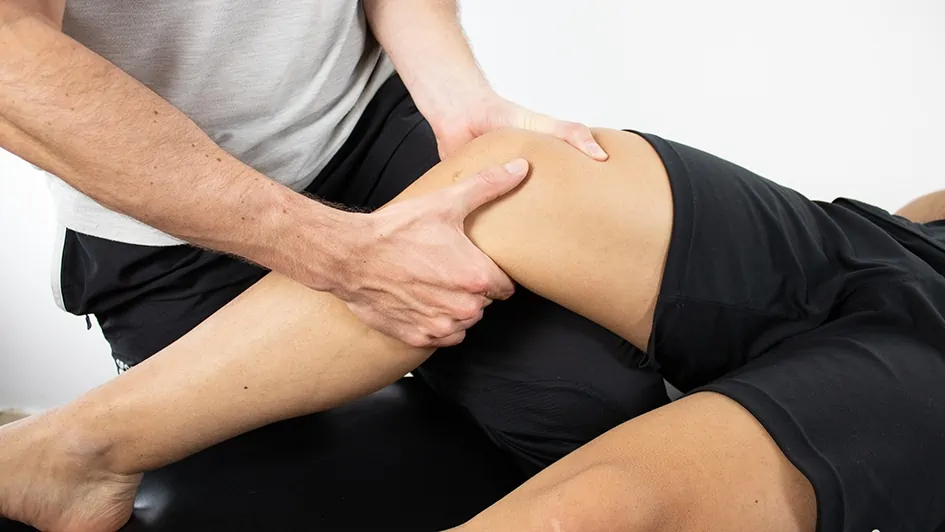Study title: GNRB® laximeter with magnetic resonance imaging in clinical practice for complete and partial anterior cruciate ligament tears detection: A prospective diagnostic study with arthroscopic validation on 214 patients. MRI vs Arthrometer.
ACL injuries are among the most prevalent knee injuries, particularly affecting athletes engaged in pivot-intensive sports. These injuries often lead to significant morbidity and require precise and timely diagnosis to ensure optimal treatment and recovery. Traditionally, ACL injuries have been diagnosed through clinical examinations, including the Lachman test, pivot shift test, and anterior drawer test. While these methods are valuable, their accuracy can be variable.
Magnetic resonance imaging (MRI) has become the gold standard for non-invasive diagnosis of ACL injuries due to its detailed visualization of soft tissue structures. However, MRI has its limitations, particularly in accurately detecting partial ACL tears. Furthermore, the accessibility of MRI can be an issue, with patients often facing long waiting periods, which delays diagnosis and treatment.
Robotic knee arthrometers, such as the GNRB® and Dyneelax, offer a promising advancement in the diagnosis of ACL injuries. These devices provide automated and precise measurements of knee laxity, which can enhance diagnostic accuracy and potentially complement traditional methods. The GNRB® is the first automated dynamic laximetry system that has shown greater accuracy and reproducibility compared to earlier devices. Similarly, Dyneelax offers additional capabilities, including rotational measurements, providing a more comprehensive analysis of knee structures.
In light of these advancements, a recent study by Théo Cojean and colleagues aimed to compare the diagnostic accuracy of the GNRB® arthrometer with MRI in detecting complete and partial ACL tears. This article will explore the findings of this study, discussing the potential benefits of incorporating robotic knee arthrometers into clinical practice and their implications for improving ACL injury diagnosis and management.
I. Study Overview - MRI vs Arthrometer GNRB®
Purpose of the Study: The primary objective of the study conducted by Théo Cojean and colleagues was to evaluate and compare the diagnostic accuracy of the GNRB® arthrometer and MRI in detecting complete and partial ACL tears. Given the limitations of MRI in identifying partial tears, the researchers aimed to determine whether the GNRB® could serve as a complementary diagnostic tool, potentially enhancing the overall accuracy of ACL injury detection.
Study Design: This prospective diagnostic study was conducted over four years, from 2016 to 2020, and involved 214 patients who had sustained knee injuries requiring surgical intervention. All participants underwent both MRI scans and GNRB® measurements prior to their surgeries. The study used arthroscopic validation as the gold standard for confirming ACL injuries, ensuring the accuracy of the diagnoses. Patients included in the study ranged from 18 to 71 years old, and they were selected based on specific inclusion and exclusion criteria to ensure the reliability of the results.
Arthroscopies were performed by a single experienced surgeon, and MRI assessments were conducted by experienced radiologists who were blinded to the arthroscopic findings. The study meticulously compared the sensitivity and specificity of MRI and the GNRB® arthrometer in detecting healthy ACLs, partial ACL tears, and complete ACL tears, providing a robust analysis of both diagnostic methods’ effectiveness.
II. Methods
Study Population: The study included 214 patients aged 18 to 71 years who presented with knee injuries necessitating surgical intervention. To ensure the accuracy and reliability of the study, specific inclusion criteria were applied: patients had to be over 18 years old, provide informed consent, and have clear MRI conclusions from radiologists. Patients were excluded if they had previously undergone ligamentoplasty, experienced ACL re-rupture, or had severe associated knee injuries such as bucket-handle meniscus tears or complete tears of collateral ligaments. The final study population consisted of 63 women (30.5%) and 151 men (69.5%), with an average age of 30 ± 12 years.
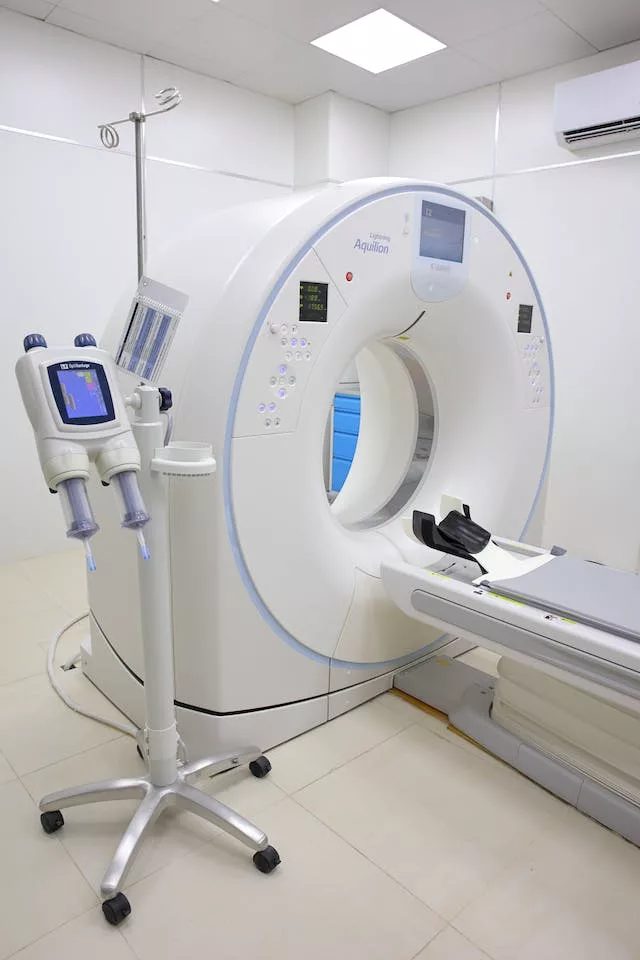
Diagnostic Tools Used: The study utilized both MRI and the GNRB® arthrometer to diagnose ACL injuries. MRI scans were performed using a 1.5-T MRI scanner (Siemens or Philips), following a standard protocol for knee imaging, which included sagittal fat-suppressed T2-weighted, sagittal proton density (PD)-weighted, axial FS PD-weighted, coronal T2, and PD-weighted images. No oblique planes were used.
The GNRB® arthrometer measured anterior tibial translation at 20° knee flexion, mimicking the Lachman test position. Patients were positioned supine on an examination table with their knees stabilized under a patellar support to prevent anterior displacement of the femur. The device applied increasing thrust forces up to 250 N to the upper calf, and a displacement transducer recorded the tibial translation relative to the femur. Measurements were taken for both the injured and healthy knees, with the side-to-side laxity difference at 134 N used to determine ACL integrity.
Outcome Measures: The primary outcome measures were the sensitivity and specificity of MRI and the GNRB® arthrometer in detecting ACL injuries. Sensitivity was defined as the ability of the diagnostic tool to correctly identify patients with ACL tears, while specificity was the ability to correctly identify patients without ACL tears. These metrics were calculated for detecting healthy ACLs, partial ACL tears, and complete ACL tears, using arthroscopic findings as the gold standard. The study also utilized receiver operating characteristic (ROC) curves to determine optimal threshold levels for side-to-side laxity differences, enhancing the diagnostic accuracy of the GNRB® arthrometer.
III. Results
Diagnostic Performance: The study found that MRI and the GNRB® arthrometer demonstrated varying levels of sensitivity and specificity in detecting healthy ACLs, complete ACL tears, and partial ACL tears. For detecting healthy ACLs, MRI showed a sensitivity (SE) of 100% and a specificity (SP) of 95%. In comparison, GNRB® achieved a sensitivity of 95.65% and a specificity of 97.5% at 134 N. When diagnosing complete ACL tears, MRI had a sensitivity of 80.81% and a specificity of 64.49%, whereas GNRB® showed a sensitivity of 77.78% and a specificity of 85.98%. For partial ACL tears, MRI had significantly lower sensitivity at 29.51% but a higher specificity at 88.97%. Conversely, GNRB® demonstrated a markedly higher sensitivity of 73.77% and a specificity of 85.52%.
Comparison Between MRI and GNRB®: The comparative analysis revealed that the GNRB® arthrometer outperformed MRI, particularly in the detection of partial ACL tears. While MRI’s sensitivity was limited to 29.51% for partial tears, the GNRB® provided a sensitivity of 73.77%, indicating a substantial improvement. This enhanced sensitivity of the GNRB® suggests that it is more effective in identifying subtle changes in knee laxity associated with partial tears, which MRI might miss due to its reliance on visual structural changes. For complete ACL tears and healthy ACLs, the GNRB®’s diagnostic performance was comparable to MRI, with the added advantage of higher specificity for complete tears (85.98% vs. MRI’s 64.49%).
ROC Curves and Thresholds: The study utilized receiver operating characteristic (ROC) curves to assess the diagnostic accuracy of both MRI and the GNRB® arthrometer. The ROC curves for the GNRB® indicated optimal threshold levels for side-to-side laxity differences: 3 mm for complete ACL tears and 1.3 mm for partial ACL tears. The area under the curve (AUC) for GNRB® was highly informative for partial ACL tears and fairly informative for complete ACL tears, with AUC values reflecting better performance compared to MRI.
The ROC analysis showed that the GNRB®’s thresholds effectively balanced sensitivity and specificity, providing reliable diagnostic metrics. For healthy ACL detection, the AUC for both MRI and GNRB® indicated high diagnostic value, underscoring their effectiveness in confirming the absence of ACL injuries. However, the GNRB®’s superior sensitivity for partial tears and better specificity for complete tears highlight its utility as a complementary diagnostic tool to MRI.
In summary, the study’s results emphasize the potential of the GNRB® arthrometer to enhance ACL injury diagnosis, particularly for partial tears, where MRI’s performance is limited. The combination of GNRB®’s dynamic measurements with MRI’s detailed imaging can provide a more comprehensive assessment, aiding clinicians in making more accurate diagnostic and treatment decisions.
IV. Discussions
Interpretation of Results: The study results indicate that the GNRB® arthrometer provides superior sensitivity in detecting partial ACL tears compared to MRI. One reason for this enhanced sensitivity is the GNRB®’s ability to measure dynamic knee laxity with precise, automated force application and displacement recording. This capability allows the GNRB® to detect subtle increases in anterior tibial translation that are characteristic of partial ACL tears, which might not be visible on static MRI images. MRI relies heavily on visualizing structural abnormalities, and partial tears often present subtle changes that can be challenging to detect. The GNRB®’s mechanical approach to assessing knee laxity provides a functional evaluation that is more sensitive to these minor yet significant changes.

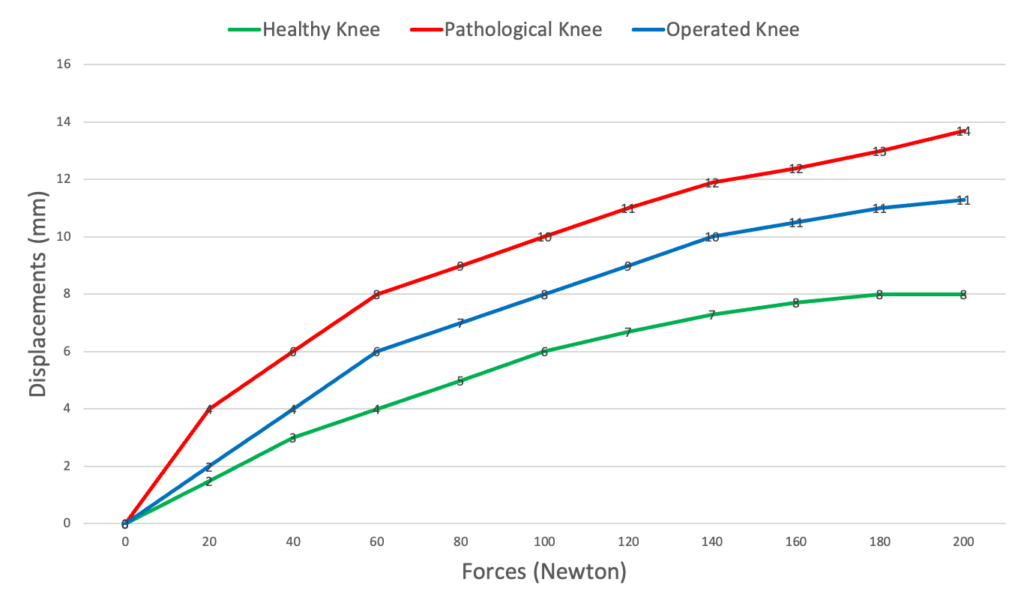
Clinical Implications: The findings of this study have several important implications for the diagnosis and treatment of ACL injuries. The superior sensitivity of the GNRB® for partial ACL tears suggests that it can be a valuable complementary tool to MRI, enhancing diagnostic accuracy and ensuring that partial tears are not missed. Early and accurate diagnosis of partial ACL tears is crucial as it influences treatment decisions, including the choice between conservative management and surgical intervention. For patients with suspected partial tears, incorporating GNRB® testing into the diagnostic pathway can help clinicians make more informed decisions, potentially leading to better outcomes.
Furthermore, the high specificity of the GNRB® for complete ACL tears and healthy ACLs supports its use in confirming diagnoses made by MRI. The combination of GNRB® and MRI provides a comprehensive assessment, where the GNRB® offers quantitative, functional data and MRI provides detailed anatomical images. This integrated approach can improve the accuracy of ACL injury diagnosis, guide treatment planning, and enhance patient care.
Comparison with Previous Studies: Previous research has documented the limitations of MRI in detecting partial ACL tears, with sensitivities ranging widely and often being low. For instance, studies have shown MRI sensitivities for partial ACL tears as low as 40% to 75%, highlighting the challenges in visualizing partial disruptions. The current study’s finding of a 29.51% sensitivity for MRI in detecting partial tears aligns with these previous reports, reinforcing the need for supplementary diagnostic tools.
In contrast, earlier studies on various arthrometers have reported mixed results regarding their accuracy and reproducibility. Devices like the KT-1000 and Telos have faced criticism for their subjective measurements and lack of reproducibility. The GNRB®, however, represents a significant advancement with its automated and dynamic laximetry capabilities. Previous studies comparing GNRB® to older devices have shown that the GNRB® offers greater accuracy and consistency, a finding that the current study supports.
The high sensitivity and specificity reported for the GNRB® in detecting complete ACL tears (77.78% sensitivity and 85.98% specificity) are consistent with prior research, which has shown sensitivities ranging from 59.4% to 92.2% and specificities from 85.98% to 99%. The current study’s robust methodology and large patient cohort further validate these findings, confirming the GNRB®’s diagnostic utility.
The current study also builds on the understanding of dynamic laximetry’s role in ACL diagnosis. By comparing GNRB® directly with MRI and using arthroscopic validation as the gold standard, the study provides strong evidence of the GNRB®’s superior performance in detecting partial ACL tears and its comparable effectiveness in diagnosing complete tears.
V. The Future of Knee Ligament Treatment: Adding Robotic Arthrometers in the Mix
The promising results of the GNRB® arthrometer in detecting ACL injuries suggest that knee arthrometers may play a crucial role in the future of ACL diagnosis. One significant advantage of incorporating robotic knee arthrometers into clinical practice is their potential to reduce the waiting period for MRI. In many countries, patients face long wait times for MRI scans, which can delay diagnosis and treatment. By using arthrometers like the GNRB® as an initial diagnostic tool, healthcare providers can triage patients more effectively, reserving MRI for cases where it is most needed. This approach can improve patient flow, reduce delays, and optimize the use of MRI resources.
While robotic arthrometers offer dynamic, quantitative assessments of knee laxity, MRI provides detailed anatomical images. Therefore, both modalities are complementary rather than competitive. The integration of dynamic tests from arthrometers and static tests from MRI can enhance diagnostic accuracy, ensuring that both the functional and structural aspects of ACL injuries are thoroughly evaluated. This combined approach can lead to better-informed treatment decisions and improved patient outcomes.
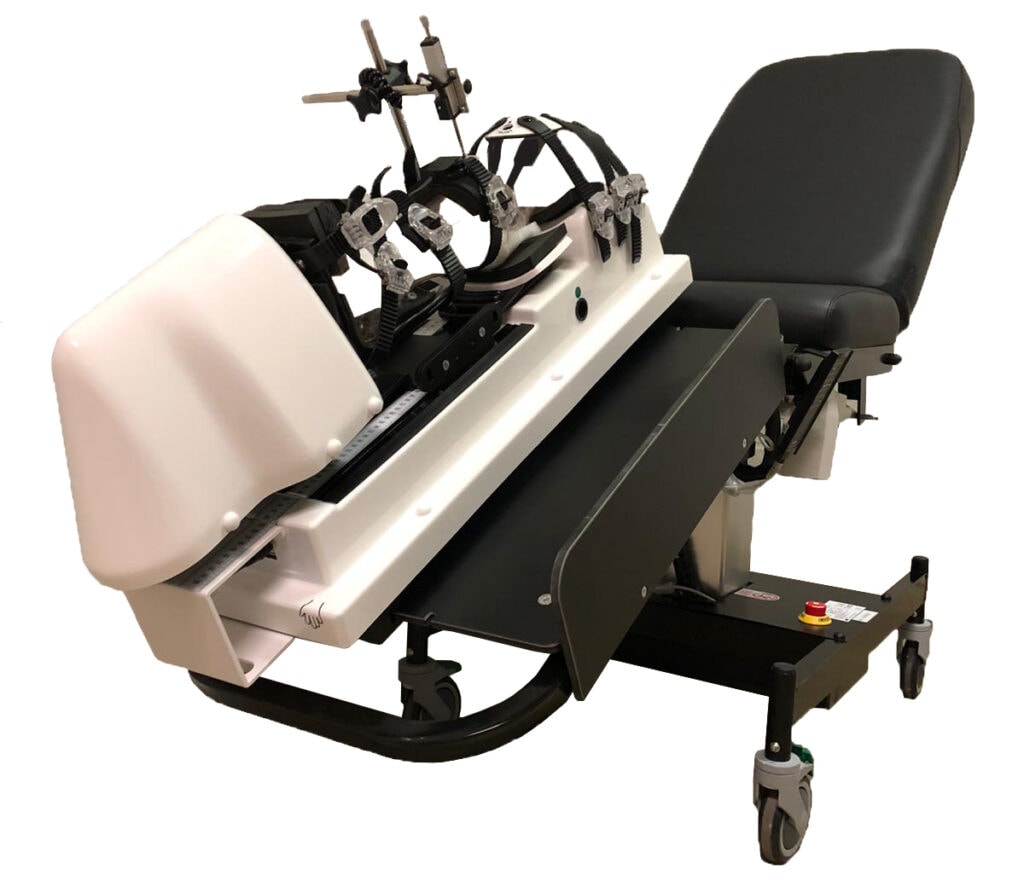
The Dyneelax arthrometer represents an advancement in this field by not only applying translational forces but also incorporating rotational measurements. This capability allows for a more comprehensive analysis of knee structures, aiding in the diagnosis of additional injuries and the planning of surgical interventions (Read Guegan – 2024). By assessing both translation and rotation, Dyneelax provides detailed insights into knee stability and function, which can be critical for surgical planning and postoperative management.
Moreover, knee arthrometers are also valuable in the postoperative monitoring of patients who have undergone ACL reconstruction (Read Forelli – 2023). Regular assessments with devices like GNRB® can help monitor the integrity of the graft, track progress in rehabilitation, and identify any issues early. This continuous monitoring can enhance the success of rehabilitation programs, ensuring that patients achieve optimal recovery.
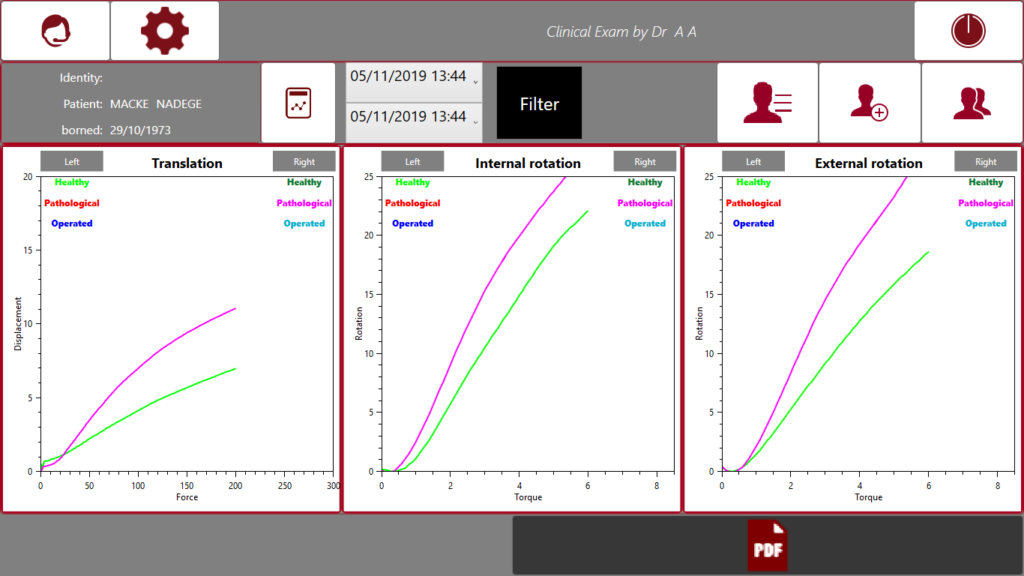
Conclusion
The study by Théo Cojean and colleagues highlights the significant potential of the GNRB® arthrometer in the accurate diagnosis of ACL injuries, particularly partial ACL tears. The GNRB® demonstrates superior sensitivity and specificity compared to MRI in detecting partial tears, addressing a critical gap in current diagnostic practices. This makes it a valuable complementary tool alongside MRI, which remains essential for detailed anatomical imaging.
The integration of robotic knee arthrometers into clinical practice can revolutionize the approach to ACL injury diagnosis and treatment. By reducing wait times for MRI and providing dynamic, quantitative assessments of knee laxity, arthrometers like GNRB® can enhance diagnostic accuracy and expedite the treatment process. Furthermore, advancements such as the Dyneelax arthrometer, with its ability to measure both translational and rotational forces, offer even more comprehensive evaluations of knee stability, aiding in both diagnosis and surgical planning.
Postoperative monitoring is another area where knee arthrometers can make a significant impact. Regular assessments using these devices can track the integrity of reconstructed ACL grafts, ensure effective rehabilitation, and ultimately improve patient outcomes.
In summary, the incorporation of robotic knee arthrometers like GNRB® and Dyneelax into clinical practice represents a significant advancement in the field of orthopedic diagnostics. These tools not only complement existing imaging modalities but also provide critical dynamic insights into knee function, enhancing the overall management of ACL injuries. As the technology continues to evolve, knee arthrometers are poised to become indispensable in delivering high-quality, efficient, and effective care for patients with ACL injuries.
Medical References (Link in DOI)
- Cojean T, Batailler C, Robert H, Cheze L. (2023). GNRB® laximeter with magnetic resonance imaging in clinical practice for complete and partial anterior cruciate ligament tears detection: A prospective diagnostic study with arthroscopic validation on 214 patients. Knee, 42, 373-381. DOI: 10.1016/j.knee.2023.03.017
- Guegan, B., Drouineau, M., Common, H., & Robert, H. (2024). All the menisco-ligamentary structures of the medial plane play a significant role in controlling anterior tibial translation and tibial rotation of the knee: Cadaveric study of 29 knees with the Dyneelax® laximeter. Journal of Experimental Orthopaedics, 11, e12038. DOI: 10.1002/jeo2.12038
- Forelli F, Le Coroller N, Gaspar M, et al. (2023). Ecological and Specific Evidence-Based Safe Return To Play After Anterior Cruciate Ligament Reconstruction In Soccer Players: A New International Paradigm. IJSPT. Published online April 2, 2023. DOI: 10.26603/001c.73031

